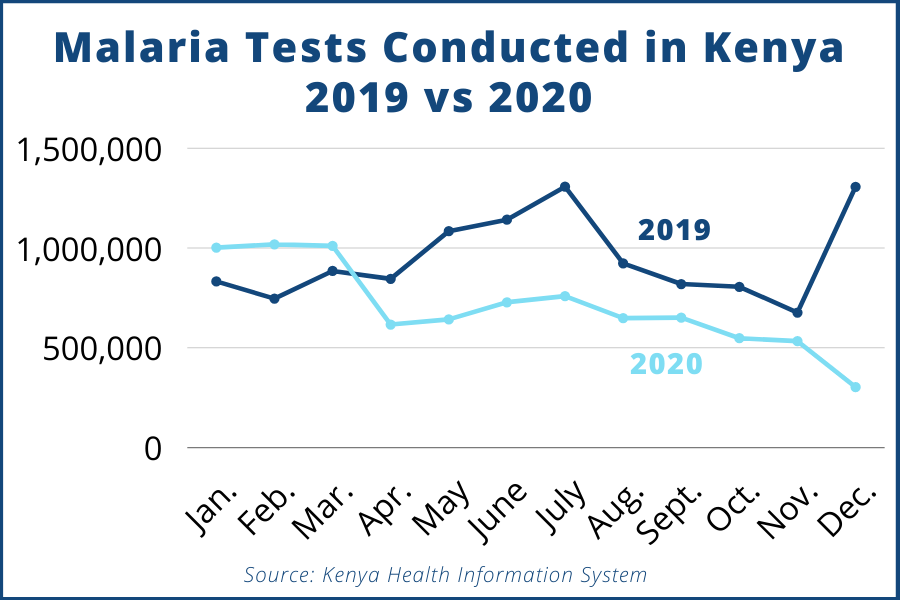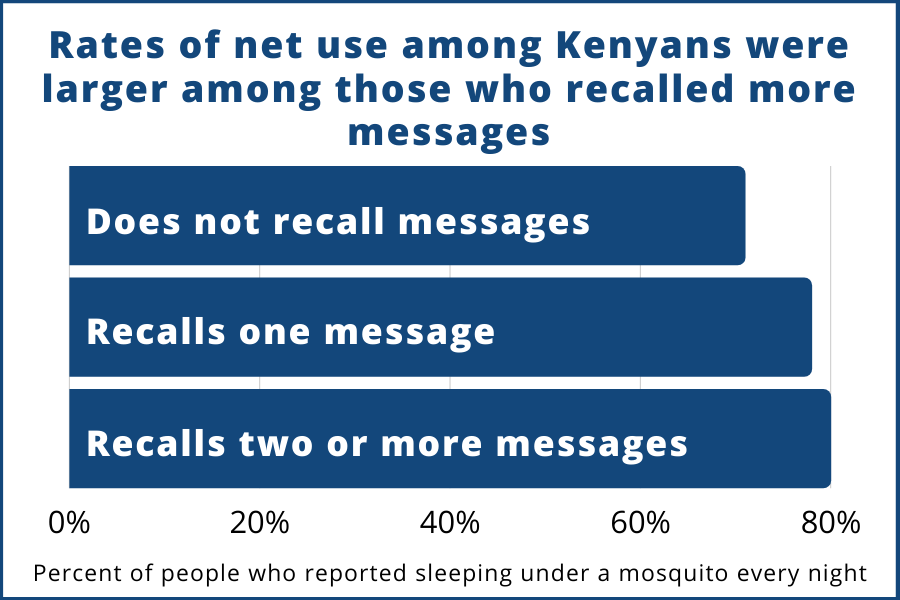The start of the COVID-19 pandemic caused considerable concern in Kenya. As a result, people hesitated to seek the care they needed for preventable and treatable diseases, including malaria. This led to monthly malaria test rates falling by as much as 77 percent in 2020 compared to the same months in 2019.
At the same time, the World Health Organization estimated malaria deaths could double due to COVID-19 related disruptions to malaria programs. Lives could be saved by intensifying malaria social and behavior change (SBC) campaigns and reinforcing the importance of prompt care-seeking for fever.
Due to the growing concern on the impact of COVID-19 on malaria testing, treatment, and prevention, the Kenya Division of National Malaria Program produced a short animation on malaria for television and online Kenyan audiences. The clips provided much-needed information about COVID-19 and the need to continue seeking care for fever in areas with malaria.
Alongside the U.S. President’s Malaria Initiative partner Breakthrough ACTION and the Kenya Division of Health Promotion, the Kenya Division of National Malaria Program created an animation that communicated the importance of continued preventive measures and care-seeking for fever by community members—all while reassuring audiences that health facilities had safety measures in place to prevent the spread of COVID-19.
“The development of the animated clips was done through a very consultative process led by the Division of National Malaria Program and its SBC coordination group. This generated a lot of interest by stakeholders and ensured local ownership,” said Dr. Grace Miheso, Chief of Party for Breakthrough ACTION Kenya.
The animated television commercial depicts a mosquito biting a young boy. Later, the child displays malaria symptoms. His father rushes him to the hospital, where the child tests positive for malaria and receives treatment from a health worker who is following COVID-19 prevention guidelines. The health worker tells the father the best way to prevent malaria is to sleep under an insecticide-treated mosquito net every night. When the father and child return home, the father ensures that the entire family, including his pregnant wife, sleep under insecticide-treated mosquito nets to prevent malaria.
The Kenya Division of National Malaria Program wove key messages throughout the animation to encourage behaviors to prevent and treat malaria. The malaria animation also helped normalize new COVID-19 protection measures while reminding community members that malaria remained a significant threat, requiring immediate care-seeking for fever, malaria testing, and treatment. Using animation instead of live filming lessened the risk of spreading COVID-19 by avoiding gathering actors and production crews.
“The animated clips were a different yet very engaging way of sharing key malaria messages that were appealing to both adults and children,” said Dr. Miheso. “Listening to and viewing these messages daily helped remind Kenyans that malaria is the main cause of fever among members of the target audience, and that prompt care-seeking for fever, including testing for malaria, is key to a positive outcome.”
The clip also challenged gender norms by showing a father bringing his child to the health center, traditionally a mother’s role in Kenya.
The animation is also an example of cross-donor collaboration, including the U.S. President’s Malaria Initiative funding the development and production and the Global Fund to Fight AIDS, Tuberculosis, and Malaria funding the broadcasting. Five television stations broadcasted the animation a total of 800 times from January to March 2021. Four million viewers—more than half of the country’s television viewership—watch these five stations.
Two months afterward, Breakthrough ACTION conducted a national phone survey to assess exposure to the animation, message recall, malaria knowledge, and the practice of malaria-related behaviors of over 2,000 Kenyans aged 18 and older. Approximately 55 percent of those surveyed self-reported exposure to the commercial.
Over 82 percent of survey respondents who remembered the commercial were able to recall two or more key messages. Among individuals who recalled two or more messages about malaria, approximately 84 percent recalled that fever is a symptom of malaria. Similarly, recollection of two or more key messages was positively related to knowing that blood tests are the best way to diagnose malaria.
The more key messages a respondent remembered, the more likely they were to report sleeping nightly under an insecticide-treated mosquito net. Over 71 percent of those who recalled the animation but no key messages reported nightly net use, compared to 78 percent who recalled one message, and 80 percent who recalled two or more.
Monthly malaria test totals nearly doubled over the three months the animation aired (January – March 2021); however, this cannot only be attributed to the animation.
The animated spot ensured households remembered the importance of prompt care-seeking and sleeping under an insecticide-treated net every night. While media campaigns are just one component of successful malaria SBC programming over the long term, the Kenya malaria TV animation served as a powerful way to get out the vital message to prevent and treat malaria during a global health crisis.


